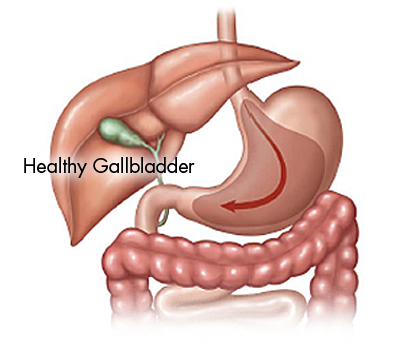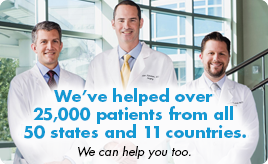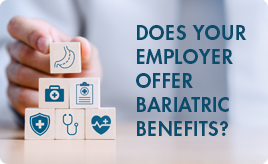gallstones and other gallbladder disorders every year.
Gallstones are a common gallbladder disorder and develop when the bile in the gallbladder becomes thickened and forms “stones,” which are commonly made up of cholesterol. Some people may experience gallstones without any
problems, while others experience pain caused by inflammation of the gallbladder when the gallstones pass into the bile ducts. Gallbladder pain in the upper right side of the abdomen or in the middle of the stomach is
commonly felt following a high-fat meal.
Gallstone Causes
Gallstones can form for a number of reasons, including when the bile contains too much cholesterol and/or bilirubin. Stones can also form when the gallbladder fails to empty correctly.
Women are twice as likely to develop gallstones than men. Other people who might be at risk of developing gallstones include:
- Individuals who are overweight or obese
- Women who are pregnant
- Individuals who have experienced rapid weight loss
- Individuals (particularly men) who have experienced weight loss and regain
- Individuals who have cirrhosis of the liver
- Those with a family history of gallstones
- Individuals who consume a diet that is high in fat, high in cholesterol, and low in fiber
- Individuals of Native American Indian descent
- Individuals who have type 2 diabetes
- Those who are taking cholesterol-lowering drugs called statins
- Women who are on Hormone Replacement Therapy during menopause
Gallstone Symptoms
Many times, gallstones don’t cause any symptoms, a condition known as “silent stones,” or asymptomatic gallstone disease. In this case, gallstones do not require treatment. However, if gallstones move into the bile ducts and
create blockage, pressure in the gallbladder increases, and one or more symptoms may occur.
A gallbladder “attack” occurs when a gallstone suddenly blocks a bile duct, causing intense. Gallbladder attacks often occur following a meal that is high in fat and may occur during the night. Common symptoms of a
gallbladder attack includes:
- Sudden, acute pain in the right upper abdomen
- Pain that increases rapidly and lasts from 30 minutes to several hours
- Radiating pain from the upper abdomen to the back between the shoulder blades
- Pain occurs under the right shoulder
- Gas or bloating
Biliary colic is a steady or intermittent ache that occurs in the center of the upper right abdomen above the bellybutton and below the breastbone. Symptoms of biliary colic are also especially common after fatty meals. In
addition to pain, biliary colic may also cause:
- Sweating
- Nausea or vomiting
- Pain that lasts from a few minutes to more than an hour.
Although gallbladder attacks often pass as gallstones move, if blockage remains, the gallbladder can become infected. If you experience any of the following symptoms, you should see your doctor immediately:
- Pain lasting more than five hours
- Nausea or vomiting
- Low-grade fever or chills
- Yellowish color of the skin or whites of the eyes
- Dark urine
- White-colored stools
Gallstone Tests & Diagnosis
Unless a patient is experiencing pain from gallstones, they may not be discovered unless the patient is being tested for other health conditions. If gallstones are suspected to be the cause of a patient’s symptoms, an
ultrasound exam can be used to test for gallstones. Other tests for gallstones include:
- CT Scan
- Cholescintigraphy (HIDA scan)
- MRCP (magnetic resonance cholangiopancreatography)
- ERCP (endoscopic retrograde cholangiopancreatography)
- Blood tests
Gallstone symptoms are often similar to symptoms of a heart attack, appendicitis, ulcers, and other common and even serious health conditions, making an accurate diagnosis critical.
Nicholson Clinic does not perform any of these tests in our office but will order tests as necessary at an outside facility.
Treatment & Gallbladder Surgery
When gallstones cause pain or other complications, gallbladder surgery may be necessary. During gallbladder surgery, the gallbladder and gallstones are usually removed at the same time—this is called cholecystectomy.
The gallbladder may be removed in one of two ways: laparoscopic and open methods.
Laparoscopic Cholecystectomy
Laparoscopic cholecystectomy is the gallstone removal method of choice and accounts for more than 90 percent of gallbladder surgeries. This procedure is minimally invasive and recovery time from the laparoscopic gallbladder
removal is generally shorter than an open cholecystectomy.
Open Cholecystectomy
This method of gallbladder removal is less common. During this procedure, one, three-to-five-inch incision is made in the upper right-hand side of the abdomen. The gallbladder is then located and removed through the
incision.
For more information concerning Gallbladder surgery, please visit Abdominal Surgery Specialists.













